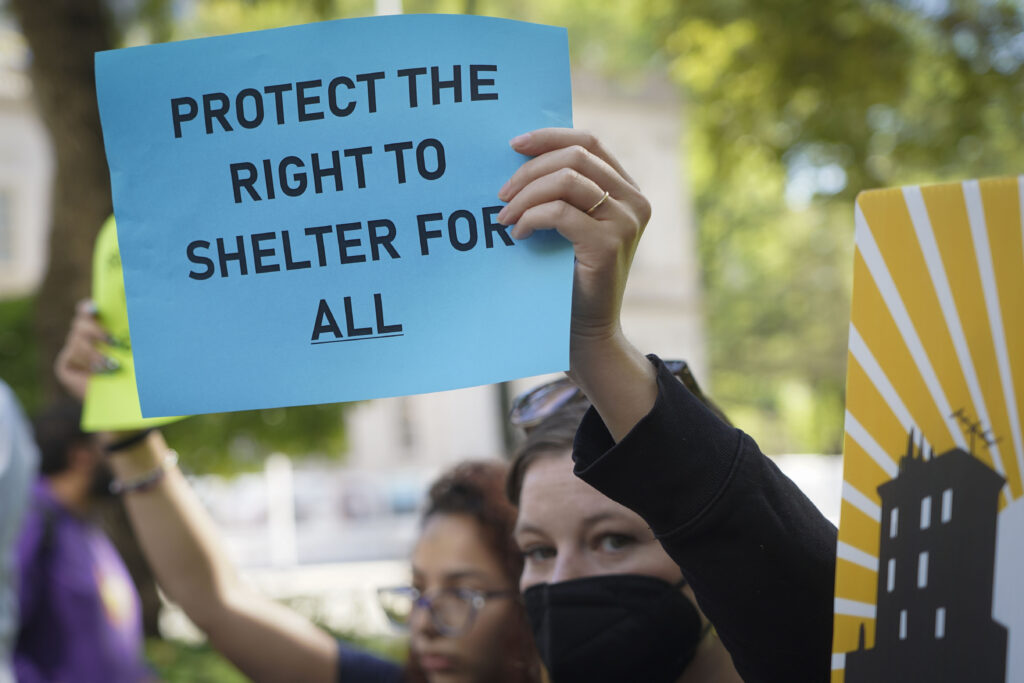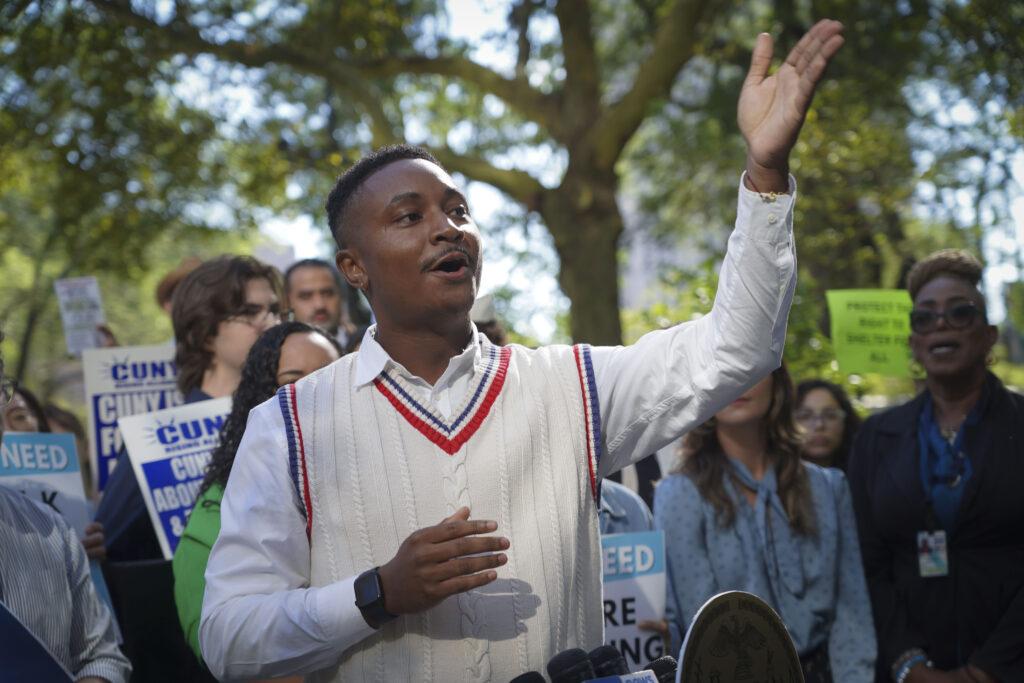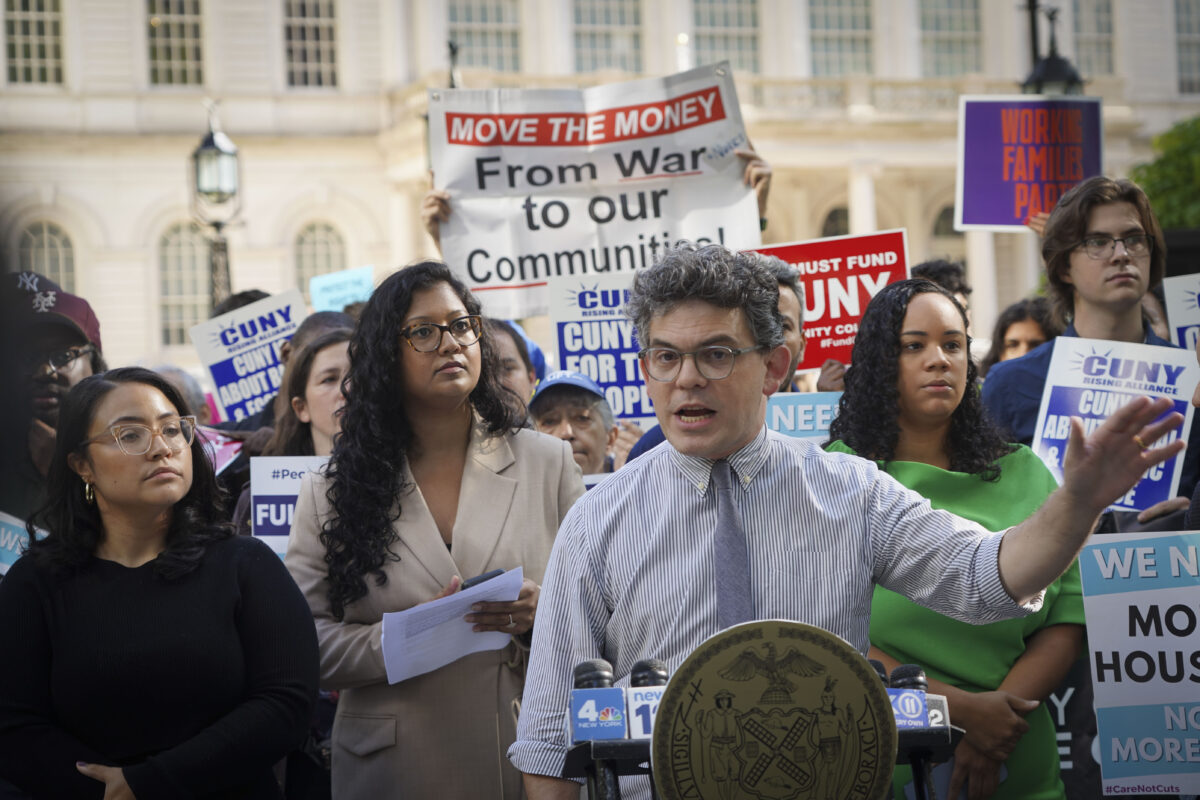Progressive Pols and Advocates Oppose Budget Cut
Critics say budget doesn’t need 15 percent cuts
By Matthew Fischetti
Lefty politicians and advocates gathered outside City Hall last week to denounce the Mayor’s proposed 15 percent budget cuts across all city agencies next year.
Hizzoner has said that the cuts are necessary due to the lack of total support from the feds and Albany in addition to COVID aid funds are running out of steam.
While Adams believes the across the board cuts are necessary to deal with the city’s finances, electeds at Tuesday’s press conference said they believed there were a range of options to stave off the cuts.
Specifically, they proposed implementing a package of reforms to the CityFHEPS program, a rental assistance program, which the mayor vetoed and the city council overrode back in July. The proposed reforms would make a series of changes to the voucher program including eligibility by changing the requirement to qualify for the program from 200 percent of the federal poverty level to 50 percent the area median income. The package of legislation, which includes four bills, is estimated to cost $17 billion over the next five years, which was the Mayor’s reasoning for vetoing the package.
(Adams axed a rule that required people to stay in homeless shelters for 90 days in order to qualify for the vouchers, which was one of the four pieces of reforms proposed by the council.)
“There’s one thing we have learned in 20 months of an Eric Adams mayoralty, it’s that this man says crazy stuff every damn day. But let’s ignore the crazy stuff he says and focus on the crazy stuff that he’s doing,” Progressive Caucus Co-Chair and Greenpoint Councilman Lincoln Restler said at the rally.
“He has already cut billions of dollars from the city budget. Our services have been obliterated. People can’t access federally funded food stamps. People can’t access cash assistance. People with housing vouchers placed in apartments can’t actually get into their homes, because we don’t have the staff. And what does the Mayor want to do? Cut. And cut. And cut,” Restler continued.

Attendee from last week’s rally against the Mayor’s proposed budget cuts. Credit: Gerardo Romo NYC Council Media Unit
Additionally, state legislators and members of the council’s Progressive Caucus who attended the rally also advocated for increasing state taxes on the wealthy, getting additional funding from the state and federal government and expedited federal work authorizations. (Gov. Hochul has been reportedly considering state work permits for migrants while federal work permit authorization has stalled in Washington.)
“Eric Adams should be looking towards other opportunities in terms of how New York should increase its revenue instead of looking toward budget cuts. Year in and year out, for the past two years that Mayor Adams has been in office, he’s looked towards budget cuts prior to the migrants being here and prior to this being a crisis. Mayor Adams should be looking towards solutions of increasing the amount of money that we could be raising,” Bed-Stuy Councilman Chi Ossé said at the rally.
Ossé raised the idea of establishing a pied-à-terre tax on the ultra wealthy, which is a tax on rental properties that aren’t the primary residence of the owner. New York State Senator Brad Holyman originally sponsored a pied-à-terre tax in Albany back in 2014.
A May study from the Comptroller’s office estimates that a combined policy that would repeal Madison Square Garden’s tax free status, a partial repeal of coop-condo abatements and a luxury pied-à-terre tax could increase city revenue by an approximate $400 million per year. Within the same report, the Comptroller’s office estimates that a luxury pied-à-terre surcharge could net up to $277 million within the first year and $239 million within its third year of implementation.
Ossé also suggested that the mayor could hire more auditors to better collect revenue as a possible solution to the problem that doesn’t require austerity measures.
Attendees at the rally also casted doubt on the projected cost of migrant arrivals being the driving factor behind the mayor’s austerity measures.
“Lastly, with these cuts, I want to be clear, the mayor’s administration has proposed cuts to the budget long before the migrants got here. So to pretend the migrants are the reason to propose cuts is disingenuous at best,” Public Advocate Jumaane Williams said at the rally.
Some groups such as the non-partisan Fiscal Policy Institute have estimated that the proposed budget impact from the mayor’s office is overblown.

Bed-Stuy Councilman Chi Ossé speaking about potential tax revenues like the pied-à-terre
“The City estimates the total cost for asylum seekers over 2024 and 2025 is $10.9 billion — however, the City’s portion of the cost for asylum seekers over 2024 and 2025 is $8.9 billion, of which $2.4 billion was already budgeted for in the adopted budget. This puts the City’s new funding need at $6.5 billion over the next two years: $2.3 billion in 2024 and $4.1 billion in 2025. The proposed budget cuts of $10 billion per year are billions of dollars higher than the increased cost estimates for asylum seekers,” Executive Director Nathan Gusdorf said in a statement.
The rally also coincided with the recently established 60-day deadline for single adult migrants without children to vacate city shelters. If a migrant wants to stay in the shelter after that time period they must reapply.
“This mayor has attempted to eliminate the right to shelter, has broken our promise of ensuring that New York City is not run with street homelessness by adding directing like the 60 day rule,” Progressive Caucus Co-Chair and chair of the Immigration Committee Shahana Hanif said at the rally.
Hanif continued to criticize the possible implementation of a 30 day rule, which would cut the stay time for single adult migrants to 30 days rather than 60. The Adams administration is currently considering the possible rule, according to the New York Post.
“Those policies are terrible, unjust and violent,” said the Park Slope councilwoman.
City agencies will submit plans to cut an initial five percent of costs in the coming November budget update and will be required to find additional five percent cuts by the time the preliminary report comes out in January and an additional five percent in cuts submitted by the release of the executive budget in April. The final adopted budget must be reached before July 1 after negotiating with the council throughout May and June.


